Your Guide to Understanding Magic Mushroom Spores
Embark on a fascinating journey into the microscopic world of magic mushroom spores. These tiny reproductive cells hold the blueprint for growth, https://mushroomsporestore.com/ offering a gateway to both scientific study and profound personal discovery. Understanding their potential is the first step into a larger, more mysterious world.
Understanding the Nature of Spores
Spores are specialized reproductive units fundamental to the life cycles of diverse organisms, including fungi, algae, and certain plants. Unlike seeds, they are typically unicellular and do not contain an embryo, relying instead on dispersal to find a suitable environment for germination. Their remarkable resilience allows them to withstand extreme conditions like drought, temperature fluctuations, and UV radiation for extended periods. This durability is key to their role in survival and propagation, enabling species to colonize new areas and persist through unfavorable seasons. Understanding the nature of the spore is therefore crucial in fields ranging from ecology and agriculture to medicine and food science.
What Exactly Are Spores?
Understanding the nature of spores reveals a world of incredible resilience and survival. These microscopic reproductive units, produced by fungi, ferns, and some bacteria, are designed for endurance and dispersal. Encased in a tough, protective coat, spores can withstand extreme heat, drought, and UV radiation, lying dormant for years until ideal conditions trigger germination. This remarkable biological adaptation allows organisms to colonize new territories and survive hostile environments, making them a fascinating subject in **fungal biology research**. Their simple structure belies a complex life cycle, showcasing nature’s ingenuity in ensuring the continuation of species across the planet.
The Biological Role in Fungal Reproduction
Understanding the nature of spores is fundamental to **fungal biology research** and managing their profound impact. These microscopic reproductive units are not seeds; they are remarkably resilient structures designed for survival and dispersal. Encased in a tough coat, spores can withstand extreme temperatures, drought, and UV radiation, lying dormant for years until ideal conditions trigger germination. This incredible durability allows fungi, bacteria, and plants to colonize new territories, but also poses significant challenges in healthcare and food safety. Mastering spore control is essential for preventing spoilage and disease.
Differentiating Spores from Mycelium and Fruiting Bodies
In the quiet corners of a forest, a mushroom releases a microscopic cloud, a testament to the remarkable nature of spores. These are not seeds, but tiny, resilient capsules of life, engineered for dispersal and patient survival. They drift on currents of air or water, a form of **fungal reproduction** that allows them to colonize new territories. Their tough outer coats enable them to withstand extreme conditions—drought, heat, and cold—for years, even centuries, simply waiting for the perfect moment of warmth and moisture to awaken and begin a new life cycle.
**Q&A**
* **Q: Are spores just from mushrooms?**
* A: No, they are also produced by ferns, mosses, and even some bacteria.
Legal Status and Important Considerations
Understanding the legal status of your business or project is a crucial first step. It determines your liability, tax obligations, and even your ability to raise funds. Whether you’re a sole proprietor, an LLC, or a corporation, your legal structure sets the ground rules for everything you do. It’s vital to consider the legal implications of contracts, intellectual property, and local regulations from the start. Don’t just set it and forget it; regularly reviewing your compliance with employment laws and data privacy is a key part of responsible management. Getting this foundation right protects you and helps your venture grow on solid ground.
Navigating the Complex Legal Landscape
Understanding the legal status of an entity is a fundamental requirement for compliance and operational integrity. This designation, whether as a corporation, LLC, or sole proprietorship, dictates liability, tax obligations, and regulatory requirements. Important considerations include the perpetual review of local and international laws, securing necessary licenses, and protecting intellectual property rights. A robust business legal structure is not merely a formality but a critical shield against personal liability and a framework for sustainable growth, directly impacting contractual capacity and fundraising potential.
Where Are Spores Permitted for Sale?
Understanding the legal status of your business is a fundamental step for any entrepreneur. This designation, such as LLC, corporation, or sole proprietorship, dictates your personal liability, tax obligations, and ability to raise capital. It’s a core aspect of business formation services and choosing the right one protects your personal assets from business debts. It’s the legal foundation that everything else is built upon. Important considerations include the paperwork involved, ongoing compliance requirements, and how the structure impacts your ability to bring on partners or investors in the future.
The Critical Distinction: Microscopy vs. Cultivation
Understanding the legal status of your business entity is a foundational step for operational integrity and risk management. This official classification, such as LLC, corporation, or sole proprietorship, dictates your liability, tax obligations, and regulatory compliance. It is crucial to select the appropriate structure during the business formation process to protect personal assets and ensure legal recognition. Important considerations include securing necessary licenses and permits, adhering to employment laws, protecting intellectual property, and understanding industry-specific regulations. Proactively managing these legal facets is essential for sustainable growth and shielding the enterprise from potential litigation or financial penalties.
**Q: What is the most common legal structure for new small businesses?**
A: The Limited Liability Company (LLC) is often favored for its flexibility, pass-through taxation, and protection of owners’ personal assets from business debts.
Primary Uses for Spore Samples
Spore samples are fundamental tools across numerous scientific and industrial fields. In medicine, they are critical for pharmaceutical research, aiding in the development of new antibiotics and vaccines. Mycologists rely on them for precise species identification and studying fungal life cycles, while astrobiologists use them to investigate the potential for life beyond Earth. Their resilience even makes them invaluable for testing the limits of sterilization protocols. Furthermore, these samples are the bedrock of biotechnology applications, from producing enzymes to pioneering sustainable materials, driving innovation through the unique properties of spores.
Microscopy Research and Scientific Study
Spore samples are fundamental to scientific and industrial progress, serving as the cornerstone for advanced mycological research. Their primary uses span from developing life-saving antibiotics and pharmaceuticals to producing sustainable food alternatives and robust industrial enzymes. Fungal biotechnology applications leverage these microscopic powerhouses for bioremediation, breaking down environmental pollutants with remarkable efficiency. These tiny capsules hold the blueprint for monumental discoveries. From revolutionizing agriculture with natural pesticides to pioneering novel materials, the potential locked within each spore is actively shaping a more innovative and sustainable future.
Identification and Taxonomy Projects
Within the sterile confines of the lab, a spore sample is a tiny time capsule, holding secrets to revolutionary applications. Its primary use lies in scientific identification, where mycologists decode its genetic blueprint to distinguish benign species from toxic molds, safeguarding public health. This precise fungal identification is crucial for environmental monitoring, tracking air quality and ecosystem changes. Furthermore, these microscopic packets are fundamental in agriculture, developed into natural biocontrol agents to protect crops, a cornerstone of sustainable farming practices that reduce chemical pesticide reliance.
Mycological Art and Photography
Spore samples are fundamental to scientific advancement and industrial innovation. In clinical diagnostics, they are vital for identifying fungal pathogens, enabling rapid treatment and improving patient outcomes. Mycologists rely on them for taxonomy and studying fungal biodiversity, while biotechnology firms harness their potential for developing novel pharmaceuticals and enzymes. Furthermore, these samples are crucial for agricultural research, helping to develop biocontrol agents that protect crops. This makes spore sample collection an essential tool for microbial research, driving progress across medicine, industry, and environmental science.
A Guide to Sourcing and Selecting Spores
Embarking on the cultivation of mushrooms begins with procuring high-quality spores. A comprehensive guide to sourcing and selecting spores emphasizes acquiring materials from reputable and established vendors, as this is crucial for genetic purity and viability. It is essential to research different strains to match your specific growing environment and desired outcomes. The guide should detail the proper examination of spore syringes or prints for signs of contamination and underscore the importance of sterile technique throughout the process. Ultimately, successful cultivation relies on selecting viable spores from a trusted source, making informed decisions the foundation of a fruitful harvest.
Finding Reputable Vendors and Suppliers
Navigating the world of mycology begins with a critical first step: procuring high-quality mushroom spores. A reliable spore source is paramount, directly influencing the success and purity of your cultivation project. Seek out reputable vendors with verified sterile techniques and positive community feedback. When selecting, prioritize genetic diversity and specific strain characteristics that align with your growing environment and goals. This initial, careful selection of viable spores lays the essential groundwork for a thriving and productive mushroom culture, transforming curiosity into a rewarding harvest.
Evaluating Strain Varieties and Genetics
Navigating the world of mycology begins with a critical first step: spore syringe selection. Your entire cultivation project hinges on the quality and viability of your starting materials. A reliable guide emphasizes sourcing from reputable, trusted vendors who provide detailed species information and guarantee sterile products. It’s not just about finding spores; it’s about securing genetic potential from a credible supplier to ensure a successful and rewarding mushroom cultivation journey from the very start.
What to Look for in a Quality Spore Syringe
Navigating the world of mycology begins with reliable spore suppliers. A quality guide helps you identify reputable vendors who provide clean, viable spores, ensuring your projects start on the right foot. It covers the essentials, from verifying microscopic analysis results to understanding different spore solutions. Remember, your success often depends on the quality of the spores you begin with. By learning to discern superior products, you can confidently embark on your cultivation journey with a higher chance of a fruitful outcome.
Proper Handling and Storage Techniques
Proper handling and storage are the cornerstones of maintaining product integrity and safety. Always begin with clean, dry hands and a sanitized workspace to prevent contamination. For storage, controlling the environment is paramount; most items thrive in cool, dark, and dry conditions, shielded from direct sunlight and extreme temperature fluctuations. Utilize airtight containers for dry goods and ensure refrigerated items are promptly sealed to preserve freshness and prevent odor transfer. Adhering to these proper storage protocols not only extends shelf life but also safeguards quality, ensuring every item remains in pristine condition until the moment of use. Mastering these techniques is a fundamental best practice for both safety and efficiency.
Creating an Optimal Environment for Longevity
Proper handling and storage techniques are fundamental for preserving product integrity and ensuring user safety. Always prioritize wearing appropriate personal protective equipment and work in a clean, organized environment. For storage, control environmental factors like temperature and humidity, using airtight containers for sensitive materials. Adhere to the **first-in, first-out (FIFO) inventory management** principle to minimize waste. Secure all items to prevent shifting or falls, and clearly label everything with contents and hazard warnings. These proactive measures prevent spoilage, accidents, and costly losses.
**Q: What is the most crucial rule for inventory management?**
A: Implementing a first-in, first-out (FIFO) system is critical to ensure older stock is used first, reducing waste and spoilage.
Maximizing Viability and Shelf Life
Proper handling and storage techniques are fundamental for preserving product integrity and ensuring user safety. Always adhere to manufacturer guidelines, which often specify ideal temperature, humidity, and light exposure levels. For optimal material preservation, store items in clean, dry environments away from direct sunlight and potential contaminants. Use appropriate personal protective equipment when handling sensitive or hazardous materials to prevent damage and exposure. These practices are not just recommendations; they are essential for maximizing shelf life and maintaining quality. Implementing these food safety protocols consistently protects your investment and guarantees that products perform as intended upon use.
Common Contamination Risks to Avoid
Proper handling and storage techniques are fundamental for product longevity and safety. Always handle items with clean, dry hands and use appropriate tools to prevent contamination or damage. For storage, maintain a cool, dry environment away from direct sunlight and extreme temperatures. Utilize airtight containers for food and secure, labeled cabinets for chemicals. Adhering to these practices not only preserves item integrity but also significantly reduces waste and potential hazards, ensuring optimal performance and safety for all users.
Essential Tools for Spore Analysis
Effective spore analysis relies on a suite of specialized laboratory tools to ensure accurate identification and quantification. The cornerstone instrument is the optical microscope, often equipped with phase-contrast or fluorescence capabilities to enhance the visualization of spores’ subtle morphological features. For sample collection and preparation, a high-volume air sampler is indispensable for capturing airborne spores onto adhesive slides or into liquid media. Proper staining techniques are frequently employed to differentiate spores from other particulate matter. Subsequent culture-based analysis requires an incubator and sterile Petri dishes containing specific growth media to promote sporulation, allowing for the study of colony characteristics. This combination of collection, microscopic, and culturing equipment forms the fundamental toolkit for mycology and environmental science.
Setting Up Your Home Microscopy Lab
Effective spore analysis relies on specialized laboratory equipment for accurate identification and quantification. The cornerstone instrument is the optical microscope, essential for observing spore morphology. For enhanced visualization of fine structural details, a scanning electron microscope (SEM) is a powerful tool for fungal spore identification. Other critical items include a microtome for preparing thin sections, a spore trap or air sampler for environmental collection, and various staining kits to differentiate species. This suite of tools enables precise analysis across mycology, agriculture, and indoor air quality assessment.
Required Equipment for Effective Study
Unlocking the microscopic world of fungal spores requires a precise arsenal. The journey begins with a high-quality compound microscope, the cornerstone of spore analysis, revealing intricate shapes and ornamentations invisible to the naked eye. For capturing these fleeting details, a digital microscope camera is indispensable, preserving specimens for further study. The process is grounded by proper sample collection tools like sterile swabs and air samplers, ensuring uncontaminated specimens. Finally, specialized stains bring cell walls to life, transforming a clear spore into a vividly identifiable structure under the lens. This careful methodology is fundamental for accurate **fungal spore identification** and understanding their role in our environment.
Step-by-Step Guide to Viewing a Sample
For reliable spore analysis, a high-quality compound microscope is the cornerstone tool, essential for observing detailed morphological characteristics. Proper sample collection and preparation are equally critical; this requires sterile swabs, airtight containers, and a biological safety cabinet to prevent contamination. For accurate identification of spore analysis techniques, specialized stains like lactophenol cotton blue are indispensable for enhancing contrast and visualizing specific structures. A calibrated micrometer is also non-negotiable for precise size measurement, a key diagnostic feature.

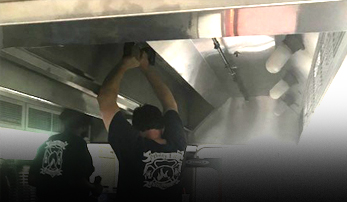
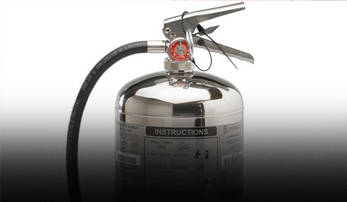
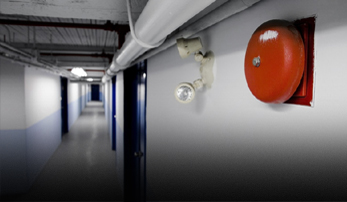

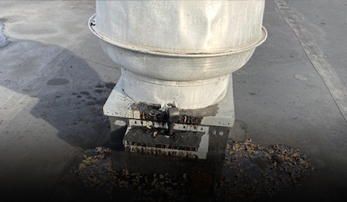
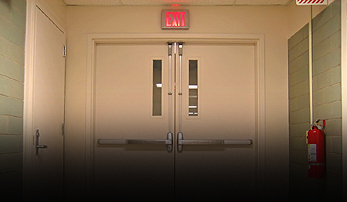

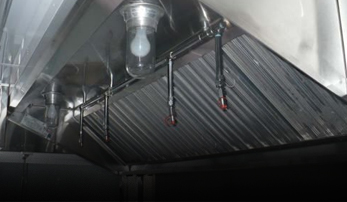
Recent Comments